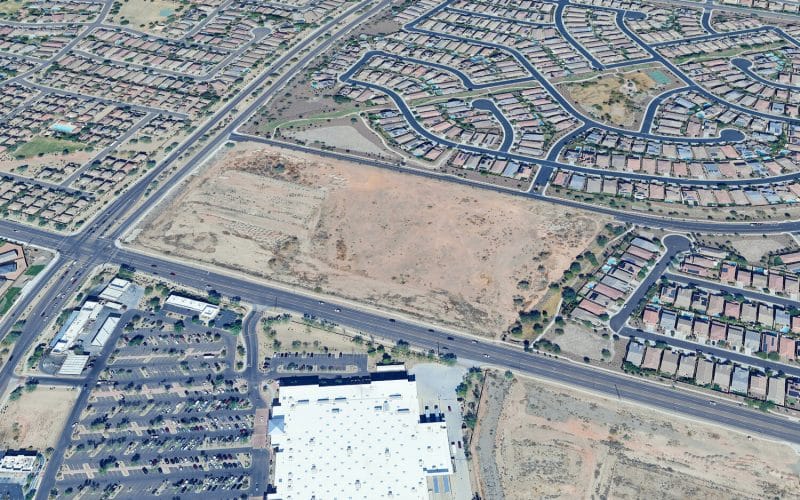 By Madison Alder | Cronkite News
By Madison Alder | Cronkite News
After decades of work and hundreds of millions of dollars, the end could be in sight for the federal office charged with relocating Navajo and Hopi families in a land dispute between the two tribes.
The director of the Office of Navajo and Hopi Indian Relocation told a U.S. House panel Thursday that he expects to have just over 100 families that will have to be dealt with in the next two years, and predicted he will make his final budget request for fiscal 2018.
Lawmakers and tribal officials alike welcomed that targeted end date – but expressed concern that it will actually happen.
A Navajo Nation official, who said the 2018 closing date came as “a surprise” to the tribe, cautioned that the relocation office has taken on new duties that are not fully funded in the fiscal 2017 budget request. That could leave work that has to be picked up by other agencies if the relocation office closes in 2018, she said.
“They need to figure out what the cost is going to be going forward,” said Carolyn Drouin, government and legislative affairs associate for the Navajo Nation Washington Office. Even if the office completes functions like hearing appeals and building homes, she said, there will still be outstanding responsibilities that “can’t just be dumped on BIA (Bureau of Indian Affairs) or some other agency.”
Hopi officials did not return calls seeking comment on the proposal.
The Navajo Nation, in light gray, sprawls over three states and encircles most of the Hopi reservation, in darker gray.
The Navajo Nation, in light gray, encircles most of the Hopi reservation, in darker gray. (Map courtesy Inspector General/Interior Department)
The relocation office has its roots in a long-running land dispute between the two tribes that resulted in litigation and legislation. In 1974, Congress passed the Navajo-Hopi Land Settlement Act, which set up a process for the tribes to work out boundaries between themselves. When they were unable to do so, a federal court stepped in and drew boundaries in 1978, ordering members of each tribe to move if tey had been drawn into the other tribe’s territory.
Congress created the Navajo Hopi Land Commission in 1981 to resettle those families. It was later replaced by the Office of Navajo and Hopi Indian Relocation, which was originally expected to wrap up its work in five years.
“When Congress created the Office of Navajo and Hopi Relocation in 1988, they did not envision that it would still be operating 28 years later and that families would still be awaiting relocation,” said Rep. Betty McCollum, D-Minnesota, at Thursday’s House Appropriations subcommittee hearing.
Relocation office Executive Director Chris Bavasi agreed that the program “was intended to be over much more quickly,” but he noted that the office has resettled more than 3,800 families, well over the original estimate of about 1,000 families that might need relocation.
Bavasi said that because it is not a “forced relocation” program, families can go through the process at their leisure. And he, as well as committee members, noted the office’s budget had been cut deeply over the years.
Disputed areas of the tribal lands and how they were ordered partitioned by a court in 1962, when residents were ordered off lands that did not belong to their tribes.
Disputed areas of the tribal lands and how they were ordered partitioned by a court in 1962, when residents were ordered off lands that did not belong to their tribes. (Map courtesy Inspector General/Interior Department)
Bavasi thanked Rep. Ken Calvert, R-California, and chairman of the Appropriations Subcommittee on Interior, Environment and Related Agencies, for doubling funding from $7.5 million in fiscal 2015 to $15 million in fiscal 2016 so his office could begin to chip away at the backlog of eligible families. The office has requested $15.4 million in next year’s budget.
But Bavasi reminded the committee that the program “is not a perpetual housing program.” He said most of next year’s money “is to provide housing and housing infrastructure for Navajos who have been certified as eligible for relocation homes.” With 92 families awaiting relocation and an estimated 20 appeals to address, Bavasi said the office to make its final budget request for fiscal 2018.
McCollum asked Bavasi what the office plans to do with the new duties it has taken on, citing a line in his testimony that “there will be a need for both a Navajo and a federal presence after ONHIR closes since such lands are held in trust by the United States for the Navajo Nation.”
Bavasi said those issues “are not foreign to the Navajo Nation, or the chapter, or the BIA and we’ve been in discussions with all of them to figure out how to transition these programs to them.”
But Drouin said Friday that she was glad to see McCollum raise the issue, because the “cost associated with the additional duties needs to be quantified.”
Rep. Tom Cole, R-Oklahoma, said Bavasi has “worked hard to bring this program to an appropriate successful conclusion.” But even after doubling the office budget in recent year, he said he fears that the program won’t be ready to end after fiscal 2018.
“That’s how I would describe failure,” Cole said. “There’s some danger of that, given – and I don’t point fingers at anybody here – but given the history of the program, there’s every reason to believe that could happen.”
But Bavasi said after the boost in funding has helped and he believes it can now meet the timeframe he has set out.
Last year, he said, “some 60 Navajo households and families” were relocated with the program, 44 of whom would have had to wait years to be moved without the extra funding. “It looks like we’re actually going to be able to finish this building.”
“There were times in our tenure where we would build over 260 homes a year, and then our appropriations were reduced,” he said. “And so we’ve only been building, let’s say 28 (houses a year), so with the additional appropriation it would give us enough to build 60 houses a year.
“We will be done in the time frame,” Bavasi said.







